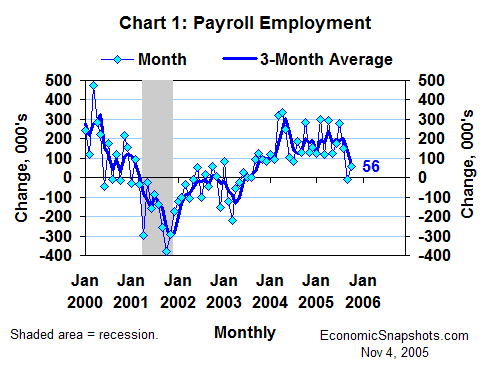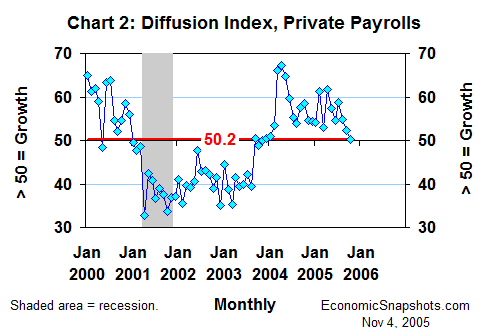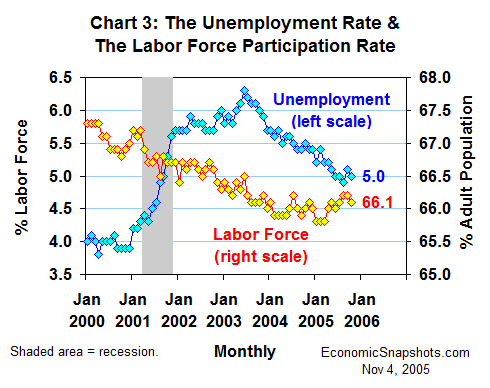
| Back to Index |
November 4, 2005 – U.S. payroll employment edged up by 56K in October (Chart 1) following a revised 8K September decline (originally -35K). Revisions reduced the prior two months’ job growth by a total of 36K.

Payrolls were essentially unchanged in both of the last two months, but the tone of these data took a significant turn for the worse in October.
As the BLS first informed us last month, all of the weakness in September payrolls was concentrated in the hurricane disaster areas – a consequence of Hurricane Katrina. If these areas had followed the same pattern as everywhere else, September payrolls would have risen by about 200K.
In contrast, the BLS said, the absence of October job growth was not geographically isolated. October’s weakness was distributed about equally between the hurricane-stricken areas and the rest of the nation.
Further, as indicated by the diffusion index, the absence of October job growth was broadly based by industry. The one-month diffusion index for private payrolls fell by 2 index points to 50.2 in October – a level consistent with near-zero job growth (Chart 2).

But, even with no “special factors” to blame, the lack of October payroll growth should be viewed with caution. As a rule, it takes at least three months to establish a new trend in these volatile data.
The unemployment rate was about unchanged in October, edging down by 0.1 percentage point (pp) to 5% (Chart 3). The unemployment rate’s low level continues to suggest a tight labor market. However, the relatively low labor force participation rate (which fell by 0.1 pp to 66.1% in October) continues to suggest that the unemployment rate may be currently understating the economy’s supply of untapped labor.

Bottom line: genuinely weak job growth in October, but not weak enough to deter the FOMC from its tightening “program”. There is another employment report due before the FOMC meets in December.
Suzanne Rizzo